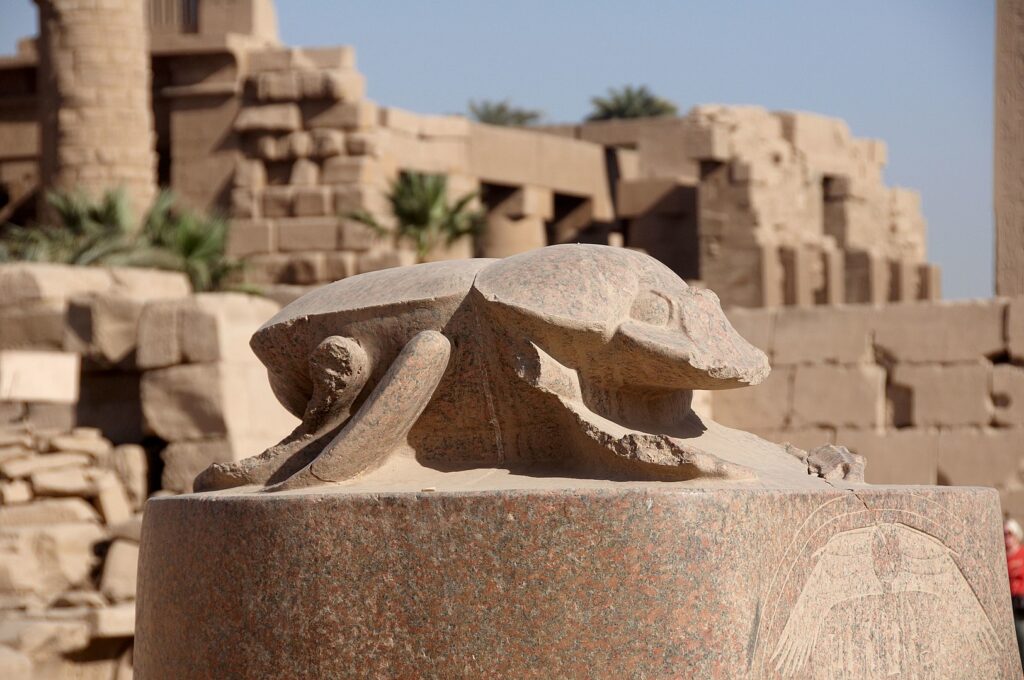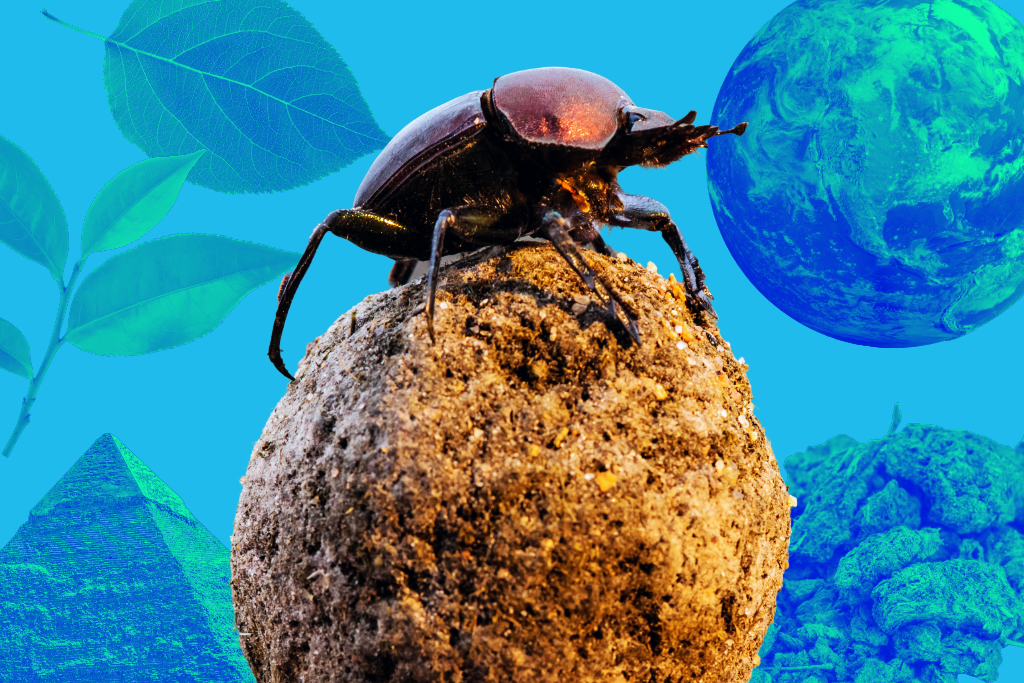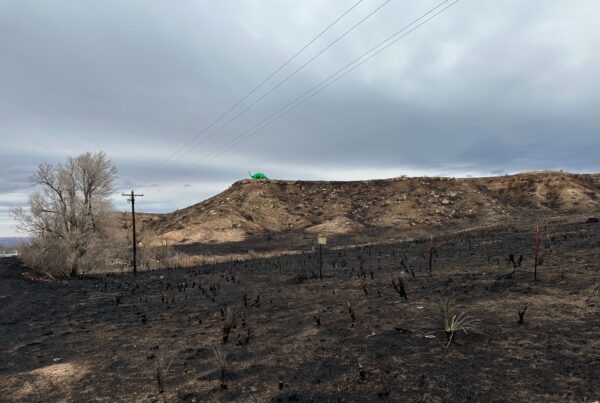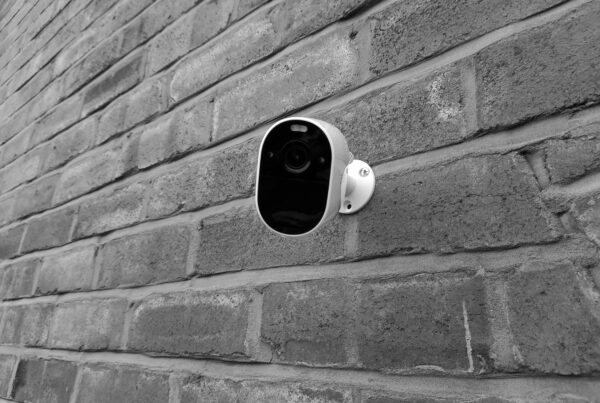1. They are beautiful (at least in the eye of the beholder)
Texas Standard’s go-to insect expert Wizzie Brown says, aside from cockroaches, which are her favorite, dung beetles are tops for her.
The Texas A&M Agrilife Senior Extension program specialist says adult dung beetles “are absolutely gorgeous.”
“A lot of times most of them are going to be kind of a brownish color… but we have some in Texas that are absolutely beautiful,” Brown said. “They’re like a metallic green, and they’ve got some like reddish gold on them. And the males have this horn that curves up off their thorax. They’re just so, so cool.”
The scarab beetle was revered in ancient Egypt as a representation of eternal life.

A scarab statue at the Karnak temple complex in Luxor, Egypt.
2. They do an important job
Perhaps you figured dung beetles have an ecological role, but think about it a little more. Brown says dung beetles are excellent decomposers.
“Think about all of the dung that would pile up if we didn’t have dung beetles,” Brown said. “So they are helping to improve soil quality. They are recycling those materials. And they also can help reduce fly populations because they’re not leaving that waste material accessible to those flies.”
3. They can be found almost everywhere
Brown says dung beetles are found worldwide except Antarctica.
It’s a little too chilly there,” she said. “And the habitats that they incorporate themselves into [range] anywhere from desert habitats to forests.”
4. They have poop preferences
Brown says most dung beetles prefer dung from herbivores – animals that feed on plant material. And the larvae like poop specifically with plant material that hasn’t been fully digested.
“Plant material that’s left over in the dung is essentially what the larvae or the immatures are going to eat. The adults are going to also feed on poo, but they actually will feed on the liquid parts of it.”
Even Brown admits that “is really disgusting.”
5. Different dung beetles interact with poop in different ways
First, there are what Brown terms “the rollers” – which are likely the type most folks are familiar with.
“The ones that will actually remove a piece of dung and create a ball with it, and then roll it away and bury it and lay an egg on it,” Brown said.
The next type, she calls “the tunnelers.”
“That are going to actually dig tunnels underneath the pile of dung, and then they’re going to move into those tunnels and lay their eggs,” she said. “And so they’re essentially living underneath it. And they have their home and their food all in one place.”
Finally, there are “the dwellers.”
“Ones that are going to actually live inside of the dung itself. And so those burrow, lay eggs, and feed all in the dung piles.”
6. Sometimes adult males with fight over dung
Adult males want a big pile of dung to attract a female “because it’s like, ‘hey, hey, look at this gift I have for you.’”
If you look closely, Brown says you can observe this behavior, which can actually be quite amusing.
“And so next time you’re in a cow field, take a look at the cow pats and you might actually see its own little ecosystem,” Brown said.















